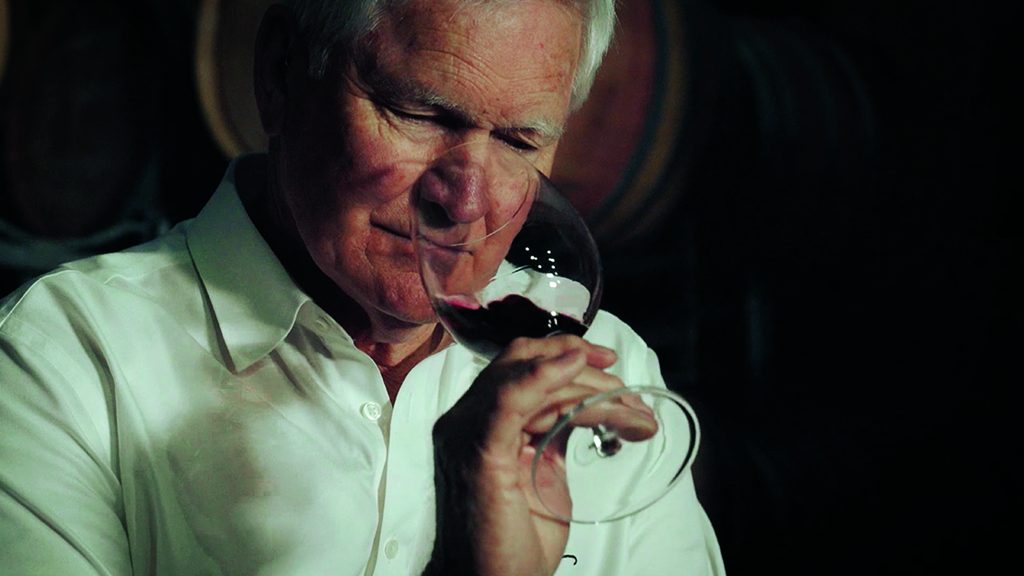Elder statesman of wine Tim Knappstein will this month embark on his 60th vintage, and after a lifetime observing the wine business from the inside, there’s one thing he knows for certain about the Australian wine industry.
“It’s totally mad, has been for years, and only seems to be getting crazier than ever,” Tim says unequivocally.
Strong words from the Adelaide Hills based winemaker who has endured enough ups and downs in the business to inform his forthright opinion.
Born into a pioneering wine family from Clare, starting his first vintage in 1962 as a cellar hand in the family’s Stanley Wine Company then watching on during an era of corporate takeovers as his family’s legacy was lost, Tim went on to start several winemaking enterprises before settling in the Hills at the helm of Riposte Wines at Lenswood.
As he begins his diamond jubilee vintage in 2021, despite all the challenges the industry faces presently, he stills enjoys making wine and loves what a younger crew of winemakers bring to the business and how they challenge him and his accumulated knowledge.
“But we’re not there yet – there are many issues to be addressed,” he says.
One of the great lessons that the wine industry once learned but since forgotten is to demystify wine for consumers, Tim says.
“We need to understand how to make wine accessible to people, but we seem to be making it more mysterious than ever.
“Now you have to know what vineyard it came from, what viticultural practices were used, what clone, how many vines per acre, and what phase of the moon it was when it was picked. All these things make it incredibly complex, and for many people they just don’t mean a thing.
“It’s simple. All we really need to convey to most consumers is that wine is a beverage made from grapes and it’s good if it tastes good. It can’t be that hard can it?
The industry has fallen into the trap of making it all too complicated, Tim believes. And the people who are hung up about all the crazy complexities are only five percent of all wine drinkers anyway.
“We need to speak to the 95%,” Tim says.
The industry is full of traps that can be avoided, Tim suggests. His advice for young winemakers is to learn their craft carefully and not dismiss technology or conventional winemaking.
“The sideshow of natural winemaking is too easy to be lured into, because you don’t have to be a good winemaker in a technical sense,” Tim warns.
“Innovation is one thing, laziness is another.
“If you’re trying to convince someone that making wines like they did 6000 years ago actually accentuates the flavour of the grape, you’re kidding yourself. Because the flavour you get is oxidation, Brettanomyces, and just plain sludge, and any grape flavour is pure coincidence.
“If you want a wine that tastes like salad dressing, then that’s absolutely fine. But you’re having a lend of yourself and your customers.”
There is a flip side, he says. There is such a broad spread of legitimate wine styles these days, and so many more varieties to work with, that wines are far less stereotyped than they have ever been.
“When I started judging wines there were two premium white styles in Australia, Riesling and Semillon. And we didn’t even talk about varieties in reds – we had Claret styles and Burgundy styles.
“Things have moved on a bit since then – and all for the better.
From a producer’s point of view, you see this in wine show results as well. As a younger, diverse group of judges become involved in the show system, you see what they are going for and the spectrum of wine styles is wider than ever.”
The judging and scoring systems for wines are also to blame for confusing consumers, Tim says.
“The 100-point system is pointless – excuse the pun. I just think it is a faulty system in that it doesn’t use the available scale. A very bad wine these days can get 80, which reads as 80 percentage points for people outside the industry. And they are our consumers.
“You have a bucket of points to play with but mostly only 15 percent of them are used. And if you transpose to the traditional 20-point system, a gold medal should be 92.5, not 95 where the points seem to have crept up to.
“And now wine businesses, producers and retailers depend on these higher and higher scores for their marketing. The bracket creep in scores has become an industry addiction.
“Maybe part of the de-mystification we need should be to choose a simpler rating system, like 1-5 stars – something that most people would understand.
“If it’s good enough to review half million-dollar motor cars out of five stars, why is it not good enough to review a bottle of wine the same way.”
Are you a Daily Wine News subscriber? If not, click here to join our mailing list. It’s free!





















